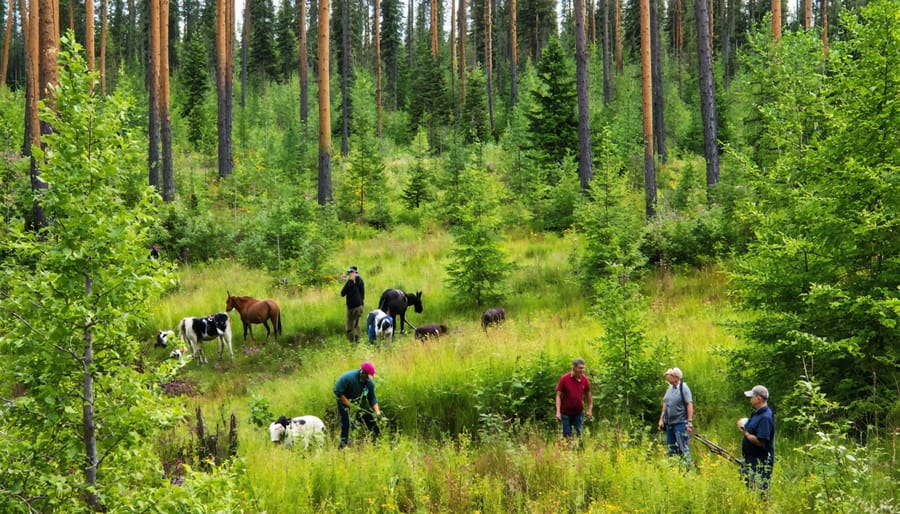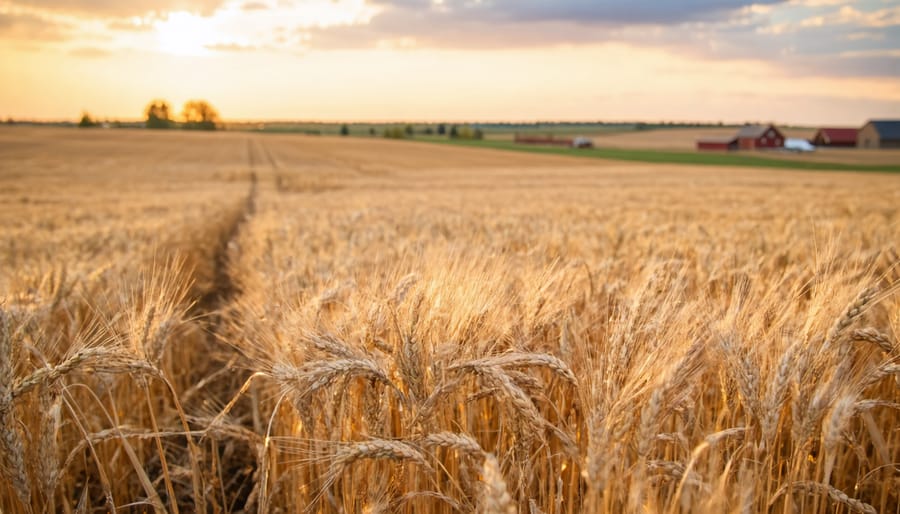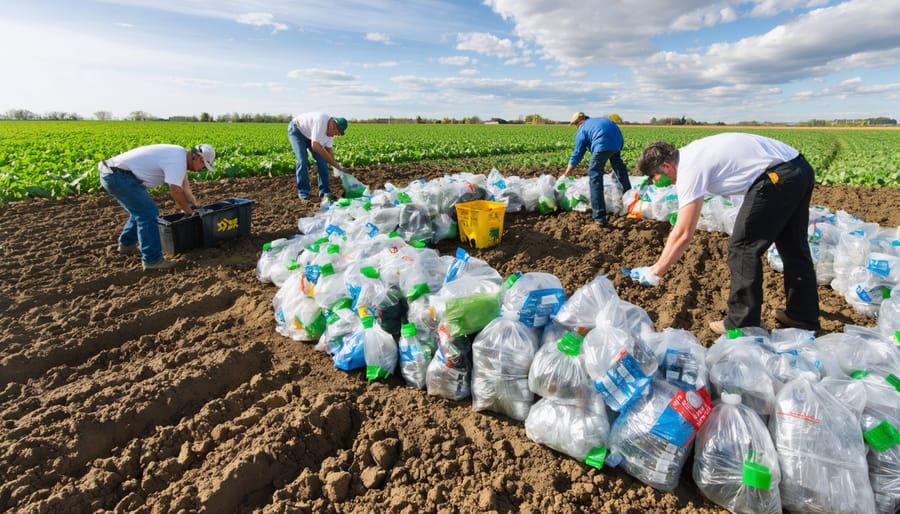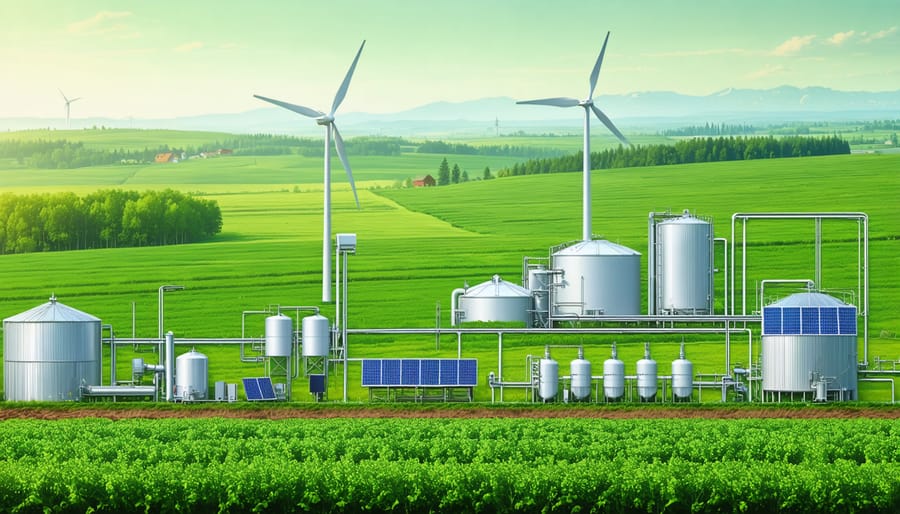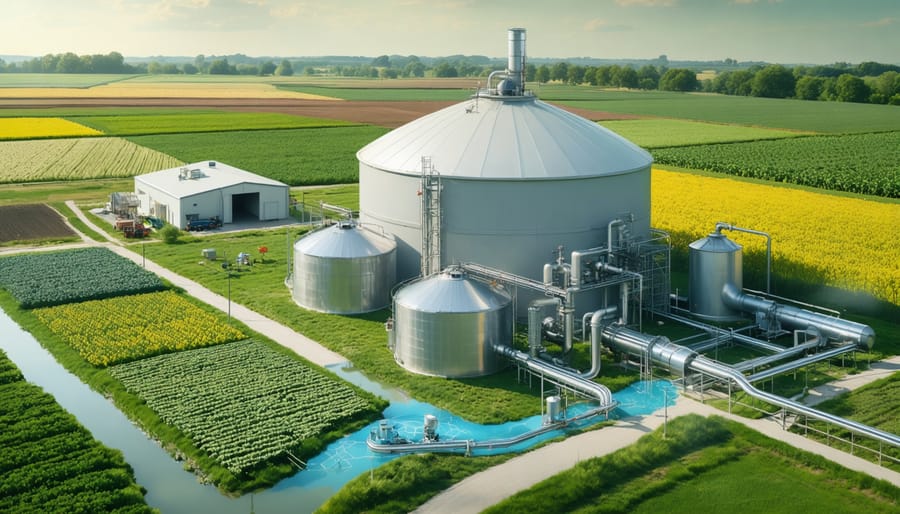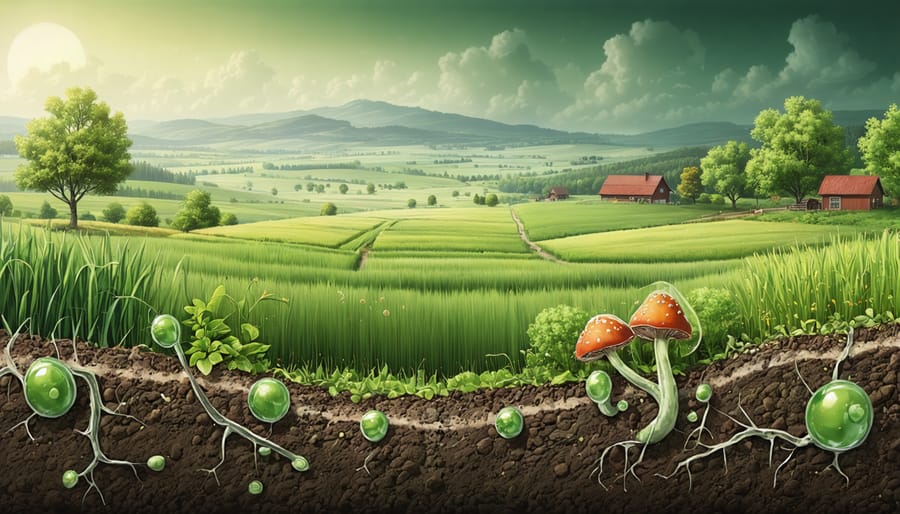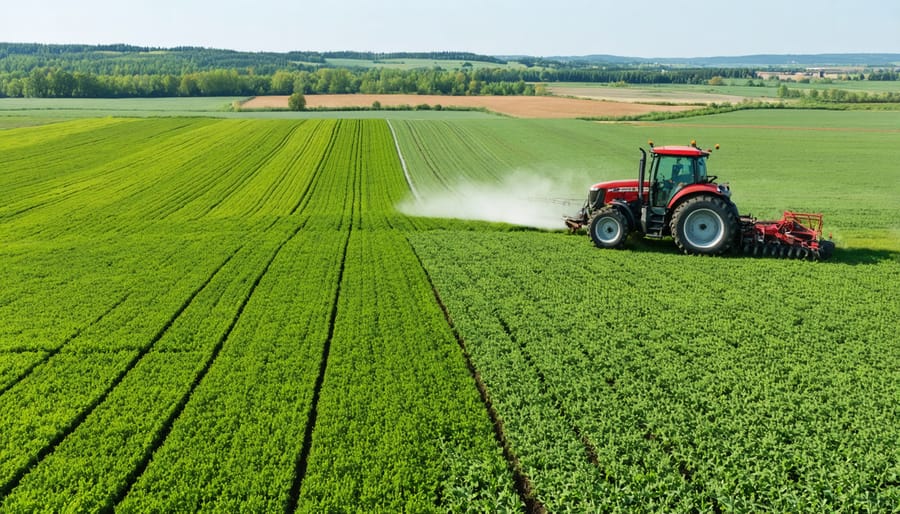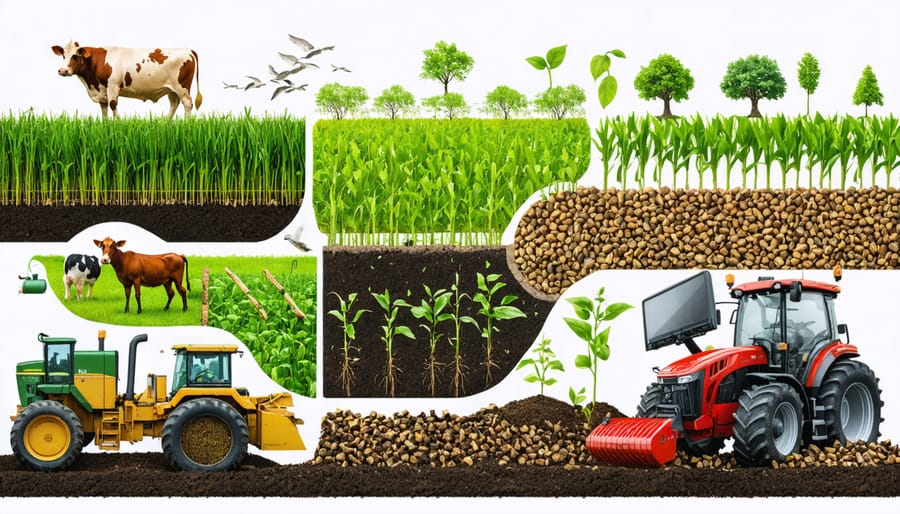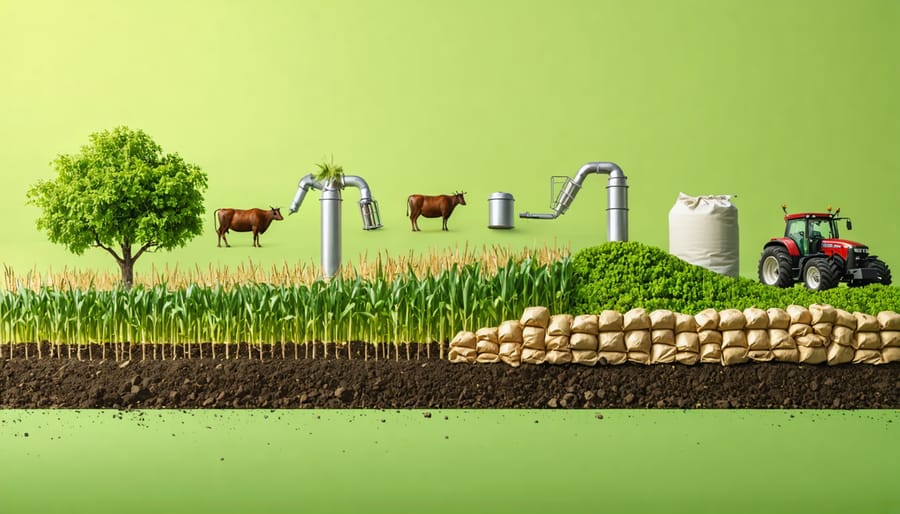Alberta’s forests stand at a crucial turning point, with over 2.3 million hectares requiring active restoration after decades of industrial use and natural disturbances. Today’s forest restoration initiatives combine traditional ecological knowledge with cutting-edge science, offering a powerful solution to rebuild our vital woodland ecosystems.
Local communities, forestry experts, and Indigenous partners have joined forces across the province, implementing innovative restoration techniques that have already successfully rehabilitated 150,000 hectares of degraded forest land since 2018. These efforts not only enhance biodiversity and carbon sequestration but also strengthen local economies through sustainable resource management and eco-tourism opportunities.
The restoration approach integrates native species reintroduction, soil rehabilitation, and advanced monitoring systems, creating resilient forest ecosystems that better withstand climate change impacts. Working alongside nature, these initiatives demonstrate how strategic intervention can accelerate forest recovery, providing essential wildlife habitat while securing valuable ecosystem services for future generations.
By embracing proven restoration methods and fostering collaborative partnerships, Alberta’s forest restoration movement sets a compelling example for environmental stewardship across North America. This practical, science-based approach offers a blueprint for communities seeking to revitalize their forest landscapes while building sustainable, nature-based economies.
The Power of Forest Residue in Agroforestry Systems
Common Forest Residues in Alberta
In Alberta’s forests, several common types of residues present both challenges and opportunities for restoration efforts. Logging slash, including branches, treetops, and damaged stems, makes up the largest portion of forest residues. These materials typically remain after commercial harvesting operations and can account for 20-30% of the total tree biomass.
Bark and sawdust from processing facilities form another significant category, with many local sawmills producing substantial volumes annually. Dead and fallen trees, often resulting from natural disturbances like pine beetle infestations or windstorms, contribute to the residue pool while providing essential habitat for wildlife.
Understory vegetation, including small shrubs and non-merchantable trees removed during forest management activities, represents another common residue type. In agricultural areas bordering forests, fence line clearings and shelter belt maintenance generate additional woody debris.
These residues can serve multiple purposes in restoration projects, from soil amendment to erosion control. Many Alberta farmers have successfully incorporated these materials into their land management strategies, creating value from what was once considered waste while supporting forest ecosystem recovery.
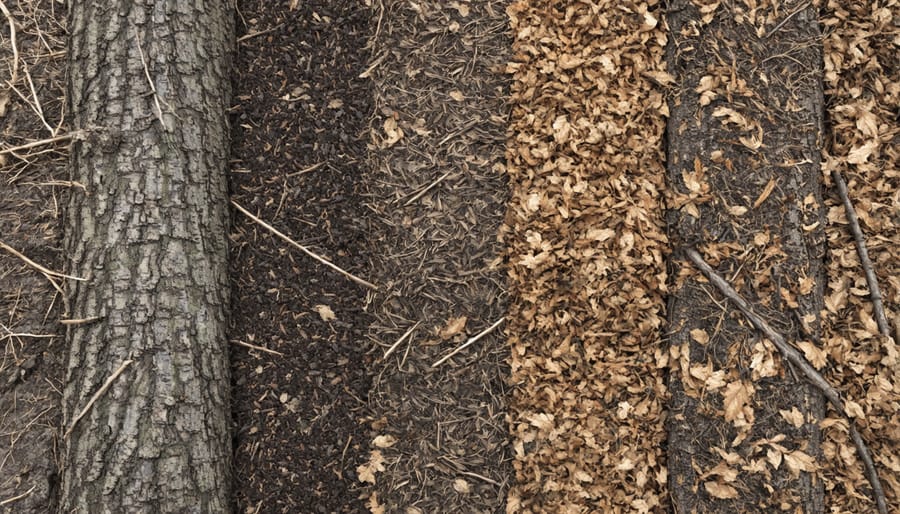
Biodiversity Benefits of Proper Residue Management
Proper residue management plays a crucial role in fostering biodiversity within forest restoration areas. When organic materials like leaves, branches, and fallen trees are carefully managed, they create essential microhabitats that support diverse wildlife populations. These residues serve as natural shelters for small mammals, amphibians, and beneficial insects, while simultaneously building healthy soil ecosystems.
In Alberta’s forests, decomposing organic matter provides vital nutrients for native plant species and helps maintain soil moisture levels, creating ideal conditions for understory vegetation growth. Research shows that areas with well-managed forest residues typically support 30% more bird species and up to 40% more beneficial insect species compared to cleared areas.
The gradual breakdown of organic materials also supports essential fungi networks that facilitate nutrient exchange between trees and other plants. These networks are particularly important for young saplings establishing themselves in restoration areas. Additionally, standing dead trees and larger woody debris offer nesting sites for cavity-dwelling birds and create essential corridors for wildlife movement, contributing to the overall health and resilience of the restored forest ecosystem.
Successful Restoration Techniques in Action
On-Site Residue Processing
Processing forest residue on-site is a crucial step in responsible forest restoration, offering both environmental and economic benefits for Alberta farmers. Modern chipping and grinding equipment can efficiently convert branches, small trees, and other woody materials into valuable resources right where they’re harvested.
Mobile chippers, ranging from small PTO-driven units to larger industrial machines, can process materials up to 45 centimetres in diameter. These units are particularly effective for operations handling 2-5 hectares, creating uniform chips ideal for various applications, including composting forest residue and mulch production.
For larger operations, horizontal grinders offer increased capacity and versatility. These machines can process contaminated materials and produce various particle sizes, making them suitable for diverse end uses. Many Alberta farmers have found success using track-mounted units that can navigate challenging terrain while processing up to 40 tonnes per hour.
Proper moisture management is essential during processing. Material should ideally be processed when moisture content is between 30-40% for optimal efficiency and end-product quality. During winter months, processing immediately after harvesting prevents materials from freezing together, making the operation more efficient.
To maximize efficiency, create designated processing zones within your restoration area. This approach minimizes transportation costs and allows for easier distribution of processed materials for soil amendment or erosion control purposes.
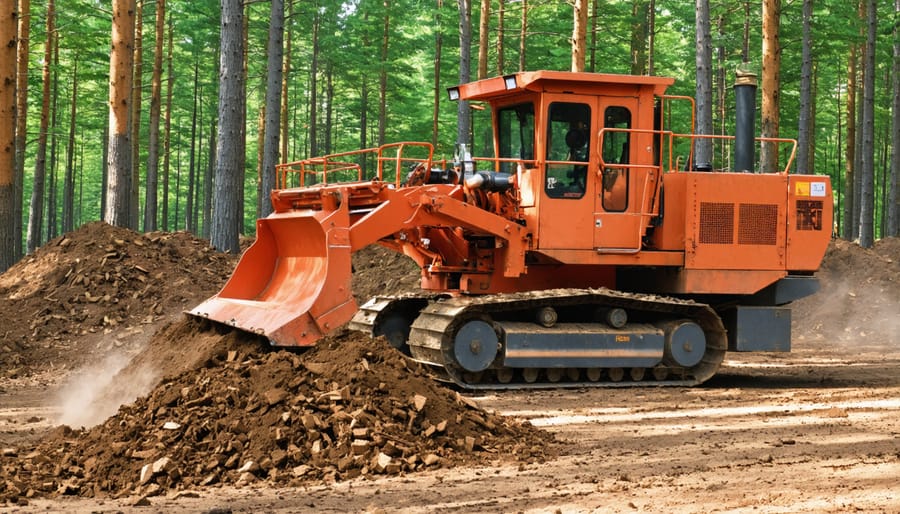
Strategic Placement and Distribution
The strategic placement of forest residue plays a crucial role in maximizing biodiversity benefits during restoration efforts. In Alberta’s diverse landscape, careful consideration of placement patterns can significantly impact wildlife habitat creation and soil health improvement.
For optimal results, distribute larger woody debris in a “mosaic pattern” across the restoration site, maintaining approximately 3-4 metres between clusters. This spacing allows for wildlife movement while providing adequate cover for smaller species. Aim to place about 30-40% of woody material in contact with the soil surface to support decomposition and moisture retention.
When working with different sizes of residue, layer materials to create microhabitats. Place larger logs (20-30 cm in diameter) as base structures, followed by smaller branches and twigs. This layering mimics natural forest floor development and provides diverse wildlife shelter options.
Consider slope and water flow when positioning residue. On gentle slopes (less than 15%), arrange debris perpendicular to the slope to prevent soil erosion and capture runoff. In wet areas, elevate some debris slightly to create dry refuge spots for wildlife.
For farmland adjacent to restoration sites, maintain a 10-metre buffer zone with lighter residue distribution to prevent pest habitat development while still supporting beneficial insects and birds. This approach has proven successful in several Alberta farms, where strategic placement has led to increased wildlife sightings and improved soil conditions within the first year of implementation.
Monitoring and Maintenance
Successful forest restoration requires consistent monitoring and adaptive maintenance strategies to ensure long-term viability. Alberta farmers have found that establishing a regular monitoring schedule, typically monthly in the first year and quarterly thereafter, helps identify and address challenges early on.
Key monitoring activities include assessing tree survival rates, measuring growth progress, and evaluating soil health. Many successful restoration projects incorporate modern technology like drone surveys and soil moisture sensors to track progress efficiently. These tools, when combined with traditional observation methods, provide a comprehensive view of the restoration’s success.
To maintain restored areas effectively, consider integrating circular agricultural practices that support both forest health and farm productivity. This might include using pruning waste as mulch or incorporating managed grazing to control undergrowth.
Local restoration expert Sarah Thompson recommends maintaining detailed records of interventions and outcomes. “Document everything from weather patterns to wildlife sightings,” she advises. “This information becomes invaluable for adapting your approach and sharing knowledge with others in the community.”
Remember to adjust your maintenance strategy based on seasonal changes and unexpected events like drought or pest outbreaks. Many Alberta farmers have found success by forming monitoring cooperatives, where neighbouring properties share resources and expertise to maintain their restored forest areas effectively.
Alberta Farmer Success Stories
The Thompson Family’s Forest Edge Innovation
Located just outside of Sundre, Alberta, the Thompson family has transformed their 300-hectare mixed farming operation into a model of forest restoration success. Sarah and Mike Thompson began integrating forest edge management techniques into their cattle and grain operation in 2015, proving that innovation and tradition can work hand in hand.
“We noticed the soil erosion along our forest edges was getting worse each year,” explains Sarah Thompson. “That’s when we decided to implement a graduated transition zone between our cropland and the existing forest.”
The Thompsons’ approach involved creating three distinct buffer zones. The first zone, stretching 10 metres from the forest, features native shrubs and small trees. The second zone incorporates tall grasses and wildflowers, while the third transitions smoothly into their cropland with cover crops.
The results have been remarkable. Within three years, they documented a 40% reduction in soil erosion and noticed increased wildlife activity, particularly among beneficial insects and native bird species. Their cattle now benefit from natural shelter, and crop yields in adjacent fields have improved by 15%.
“The initial investment was about $15,000, but the long-term benefits far outweigh the costs,” Mike notes. “We’re seeing better moisture retention, improved soil health, and our livestock are thriving with the additional shelter.”
The Thompsons now host regular farm tours, sharing their experiences with other Alberta farmers interested in similar initiatives.
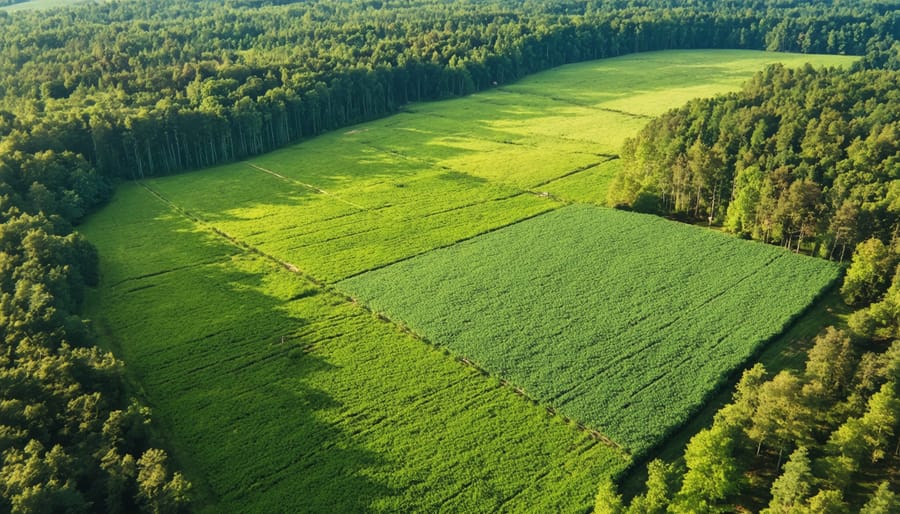
Red Deer Valley Restoration Project
The Red Deer Valley has become a shining example of community-driven forest restoration success in Alberta. Local farmers, indigenous communities, and agricultural professionals have joined forces to rehabilitate over 2,000 hectares of degraded woodland areas along the valley’s stretch. This collaborative effort, initiated in 2019, demonstrates how collective action can create meaningful environmental change.
The project uniquely combines traditional ecological knowledge with modern restoration techniques. Local First Nations elders have shared invaluable insights about native plant species and historical forest patterns, while agricultural experts have introduced innovative approaches to transforming agricultural waste into soil amendments that support new growth.
Participating farmers have reported significant benefits, including improved soil stability, enhanced wildlife corridors, and better wind protection for their crops. The initiative has also created a model for other communities, showing how restoration work can align with agricultural productivity while fostering biodiversity.
The project’s success relies heavily on volunteer participation, with over 500 community members contributing to planting events, monitoring sessions, and educational workshops. Local schools have incorporated the restoration site into their curriculum, ensuring the next generation understands the importance of forest stewardship.
The Red Deer Valley initiative proves that when communities come together, large-scale environmental restoration is not just possible but can become a source of regional pride and ecological renewal.
Getting Started with Your Restoration Project
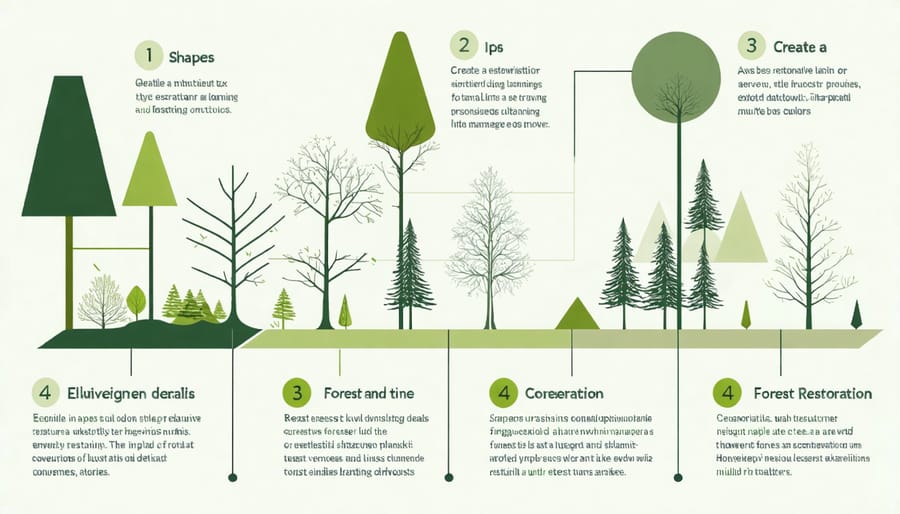
Assessment and Planning Tools
Several valuable assessment and planning tools are available to Alberta farmers embarking on forest restoration projects. The Alberta Forest Management Planning Standard serves as an excellent starting point, offering detailed guidelines for evaluating your land’s potential and developing a sustainable restoration strategy.
For initial site assessment, the Forest Health Assessment Tool (FHAT) helps landowners evaluate their existing forest conditions and identify areas requiring immediate attention. This user-friendly resource includes checklists and scoring systems to determine forest health indicators such as soil quality, species diversity, and canopy coverage.
The Alberta Conservation Information Management System (ACIMS) provides crucial data about local ecosystems and species distribution, helping you make informed decisions about which native trees and plants will thrive in your area. This database is particularly valuable when planning species selection for your restoration project.
Digital mapping tools like the Agricultural Region of Alberta Soil Information Database (AGRASID) offer detailed soil and terrain information essential for successful forest establishment. These resources help identify optimal planting locations and potential challenges specific to your property.
Local forestry experts and agricultural extension offices provide personalized guidance and can help you interpret these tools effectively. Many offer workshops and field demonstrations throughout the year, giving hands-on experience with assessment techniques and planning strategies. Remember to connect with neighbouring farmers who have undertaken similar projects – their practical experience often proves invaluable during the planning phase.
Local Support and Funding Options
Alberta farmers looking to participate in forest restoration initiatives have access to various funding and support options through provincial and federal programs. The Environmental Farm Plan (EFP) offers grants of up to $50,000 for qualifying projects, while the Canadian Agricultural Partnership (CAP) provides matching funds for environmental stewardship activities, including forest restoration.
Local conservation authorities frequently partner with farmers, offering technical expertise and cost-sharing opportunities. The Alberta Conservation Association (ACA) provides both financial assistance and hands-on support, helping landowners develop comprehensive restoration plans tailored to their specific needs.
Farmers can also benefit from participating in sustainability certification programs, which often include funding components for environmental improvements. These programs typically cover 40-60% of project costs and provide valuable networking opportunities with other restoration-minded farmers.
The Growing Forward Initiative offers specialized grants for agroforestry projects, with funding up to $75,000 for qualified applicants. Additionally, local agricultural societies and watershed groups frequently provide smaller grants ranging from $5,000 to $15,000 for community-based restoration projects.
For guidance on accessing these resources, farmers can connect with their regional Agricultural Fieldman or visit their local Agriculture Service Board office. These professionals can help navigate application processes and identify the most suitable funding options for specific restoration goals.
As we’ve explored throughout this guide, forest restoration initiatives present a remarkable opportunity for Alberta’s agricultural community to enhance both environmental sustainability and farm productivity. The success stories we’ve shared from local farmers demonstrate that integrating forest restoration practices isn’t just environmentally sound—it’s economically viable.
Remember that every hectare of restored forest contributes to soil health, water retention, and biodiversity while creating natural windbreaks and wildlife corridors. These benefits extend beyond individual properties to strengthen our entire agricultural ecosystem and help build climate resilience across the province.
The resources and support available through local agricultural extension offices, conservation authorities, and farming cooperatives make this an ideal time to begin your restoration journey. Whether you’re starting with a small woodlot or planning a larger-scale project, there’s a community of experienced farmers and experts ready to share their knowledge and support your efforts.
We encourage you to take the first step by conducting a property assessment and connecting with local restoration experts. Consider joining one of the many farmer-led initiatives in Alberta that are already making significant progress in this field. Your participation in forest restoration isn’t just an investment in your land—it’s a commitment to the future of sustainable agriculture in our region.
By working together, we can create a mosaic of healthy, productive farmland and restored forest ecosystems that will benefit generations to come. The time to act is now, and every tree planted brings us closer to a more resilient and sustainable agricultural future for Alberta.

